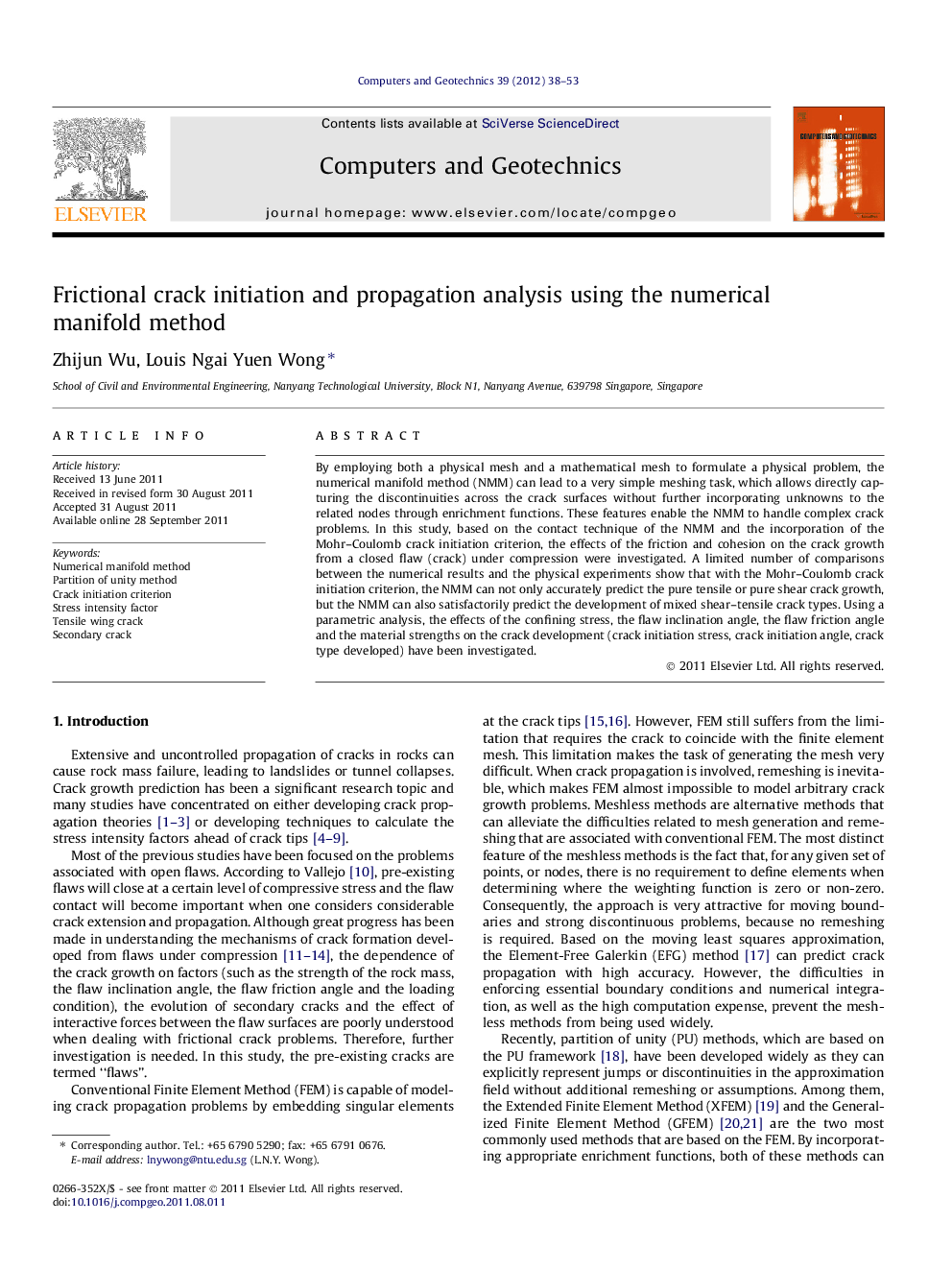| کد مقاله | کد نشریه | سال انتشار | مقاله انگلیسی | نسخه تمام متن |
|---|---|---|---|---|
| 255126 | 503350 | 2012 | 16 صفحه PDF | دانلود رایگان |

By employing both a physical mesh and a mathematical mesh to formulate a physical problem, the numerical manifold method (NMM) can lead to a very simple meshing task, which allows directly capturing the discontinuities across the crack surfaces without further incorporating unknowns to the related nodes through enrichment functions. These features enable the NMM to handle complex crack problems. In this study, based on the contact technique of the NMM and the incorporation of the Mohr–Coulomb crack initiation criterion, the effects of the friction and cohesion on the crack growth from a closed flaw (crack) under compression were investigated. A limited number of comparisons between the numerical results and the physical experiments show that with the Mohr–Coulomb crack initiation criterion, the NMM can not only accurately predict the pure tensile or pure shear crack growth, but the NMM can also satisfactorily predict the development of mixed shear–tensile crack types. Using a parametric analysis, the effects of the confining stress, the flaw inclination angle, the flaw friction angle and the material strengths on the crack development (crack initiation stress, crack initiation angle, crack type developed) have been investigated.
► Model crack initiation and propagation using the numerical manifold method (NMM).
► Incorporate the Mohr–Coulomb crack initiation criterion into NMM.
► Satisfactorily predict the growth of tensile, shear, and mixed shear–tensile cracks.
► Effects of confining stress, flaw properties and material strength on cracking are investigated.
Journal: Computers and Geotechnics - Volume 39, January 2012, Pages 38–53